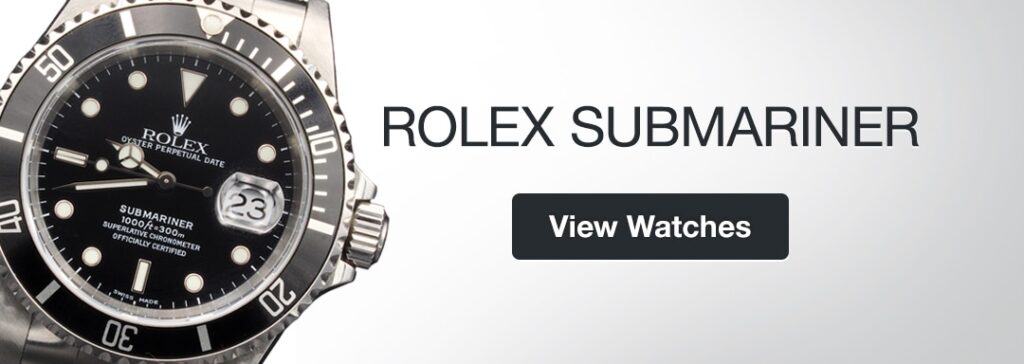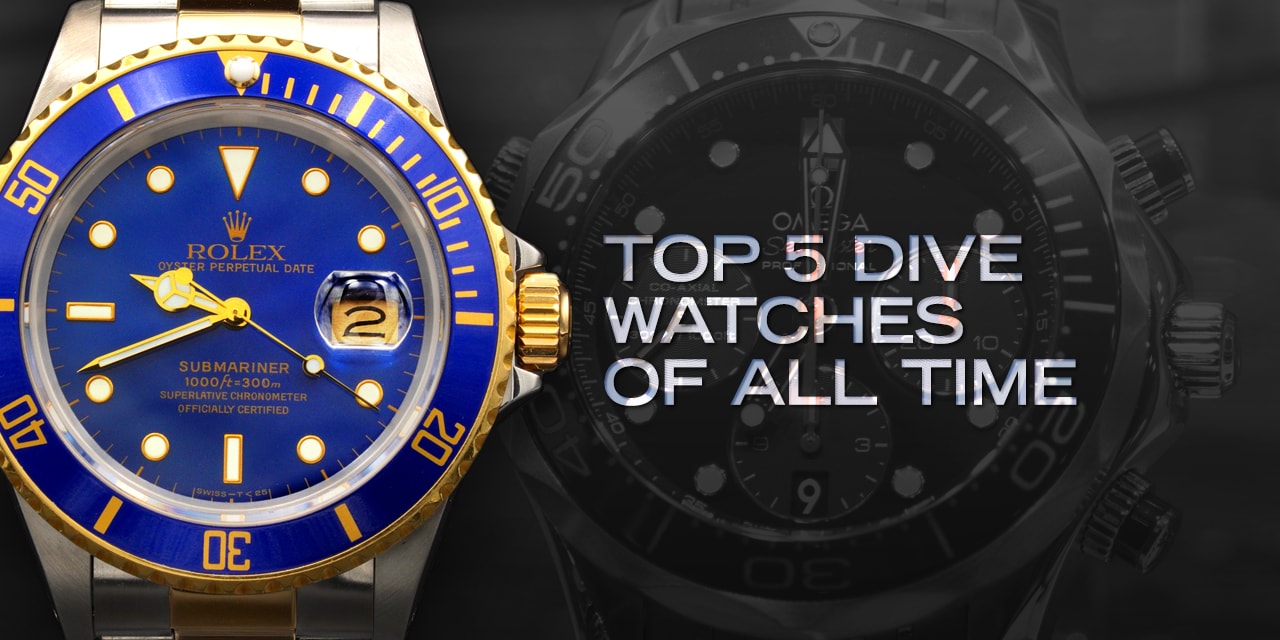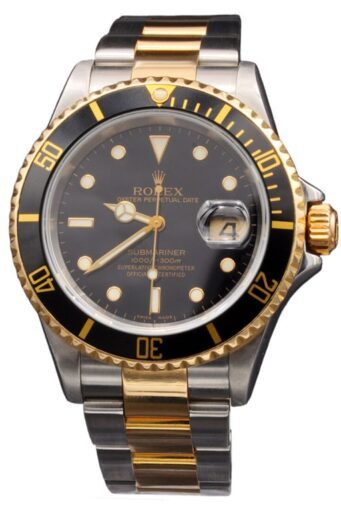The BeckerTime Guide to the Top 5 Dive Watches of All Time
There are a number of different types of watch, the category into which they slot dictated by both their style and their various functions.
Arguably the most popular genre, of course, is the dive watch. However, it is an unusual class of timepiece for several reasons.
To start with, their usefulness was negated almost as soon as they were invented. The first acknowledged dive watch (and I’m not trying to start an argument here) came out in 1953 to coincide with (read: take advantage of) the burgeoning craze for recreational Scuba diving. But the strength of that craze also gave rise to other innovations, namely the first dive computer in 1955, which could do the job of a dive watch far better.
And secondly, in contrast to the likes of pilot’s watches or chronographs, it is only dive watches which have a set of internationally recognized, legally binding standards they must adhere to in order to be named as such—and some of the most iconic examples in history failed to live up to these criteria for significant parts of their production runs.
Obviously, all of that is irrelevant. Nobody wears a dive watch to go diving anymore in the same way nobody times a motor race with just their trusty chrono. The reason they are still such a prevalent and beloved presence in the industry is because they are at once tough-as-nails and achingly stylish. They give the impression you might just be a man or woman of action, even if they are just peeking out from under the cuff of a business suit round a board table. James Bond wears a dive watch. So do the SAS. Nuff said.
Yet the question remains; which out of the untold hordes of dive watches released over the last 70-years or so can make up a top 5 list. Again, I’ve no desire to spike anyone’s blood pressure, and there will be plenty out there who disagree with the ones I’ve chosen.
But I have tried to select those specimens which can claim to have made substantial contributions to the development of the field as a whole. As always, we welcome opposing views so why not leave us a comment below.
5. The DOXA SUB 300T
The first four spots on a dive watch top 5 list are pretty easy. It’s the fifth one that gives you the headache.
There are plenty of contenders. We could’ve gone with the Tudor Pelagos, the Breitling Superocean, the Omega PloProf or literally legions of others.
However, for their significant but often overlooked accomplishments, I’m going with DOXA. More specifically, the DOXA SUB 300T.
Released originally in 1967, it was by no means early to the game—but when it did arrive, it came with some standout hallmarks. The cushion-shaped case with those flared haunches made it instantly noticeable, and if you somehow missed those, the bright orange dial was certainly an eyecatcher. The color was chosen in order to improve legibility at depth; except, it didn’t. Anyone who’s been diving knows the red/orange spectrum is the first to disappear underwater but nevertheless, DOXA realized it gave their new model an edge.
So too did the novel bezel, the first to include both the standard diver’s elapsed time markings and the U.S. Navy’s No Decompression table. Between them, they added a layer of safety no other watch on the market had.
And securing it all is what many believe to be the best bracelet of all time, the supremely supple, mesh-like ‘Beads of Rice’.
The 300T was actually developed with the help of legendary marine explorer Jacques Cousteau, then chairman of US Divers, and it was his input which made it one of the most accomplished watches of its type ever made.
It was far from DOXA’s only contribution either. In 1969 they were the first brand to bring a watch with a helium release valve to market. Two years before a certain Rolex Sea-Dweller (and that’s the last we’ll be hearing about that particular brand*) became commercially available, the 300T Conquistador introduced the concept. The valve allowed the watch to offload any helium molecules which might have seeped inside the case during a saturation diver’s long stay in an underwater habitat breathing different gas mixtures. Today, the Conquistador is a massively valuable find on the vintage divers market, and its modern equivalent, the confusingly named SUB 300T (the standard SUB 300 is a recreation of the 1967 original), was released in 2019 as a tribute to that pioneering model.
DOXA and its successes have long been underappreciated in the industry, but they remain singularly impressive feats in an industry rife not short on invention.
*Nah, not really.
4. The Panerai Submersible
It’s not every watch collection which gets named after its luminescent paint.
Italian (now Swiss) brand Panerai have been in business since 1860, firstly as a watchmaking school and workshop and then, after the turn of the 20th century, the main supplier of the Regia Marina, the Royal Italian Navy.
It was this military connection which led to the brand’s main breakthroughs, namely luminous substances which could be seen underwater and used to coat the Navy’s various navigation tools and timing devices.
Panerai’s first compound, trademarked Radiomir, utilized radium before the dangers of the element became well known. It would go on to paint the hands and numerals of their original waterproof watch, launched in 1935 and also called the Radiomir, worn by Italy’s newly formed underwater demolition frogman unit.
Following considerable success supplying the Axis powers during World War II, Panerai established another, safer luminescent material, this one based on a beta ray emitter, which they named Luminor.
In 1949, the prototype Luminor watch debuted this paint in a model with one of the most distinctively engineered elements of any timepiece before or since. As with the Radiomir, the Luminor’s earliest cases were provided and assembled by Rolex and featured a crown locking mechanism made up of a crescent moon of steel completely enveloping the crown, protecting it from being accidentally knocked.
Bizarrely however, it would take until 1993 for any Panerai watch to be available to the general public. Even then, the brand needed some high profile endorsements before they were rescued from obscurity, and the tale of Sylvester Stallone’s patronage putting them on the road to their current standing is a well-known one.
But there was one problem with the Luminor; according to those official international standards we talked about earlier, it is not a dive watch. While they might have been good enough for various global Naval forces, none of the range has a unidirectional rotating bezel with continuous minute markings and so don’t pass the dive watch benchmarks laid down in ISO 6425.
To remedy that, Panerai released the Submersible, a variation on the original which fulfilled all the qualifications needed. Originally embedded in the Luminor line, the two were separated in 2019 and now exist as standalone collections. But that emblematic and impossible to miss crown protector remains front and center on both and there is no mistaking the Submersible’s foundations.
A bona fide design classic, there is nothing else that looks quite like it.
3. The Omega Seamaster Diver 300M
Although not quite as long as Panerai’s, Omega also have an extensive history with dive watches.
Some still tout their 1932 ‘Marine’ as the first ever example of the type although it bears very little resemblance to what we would describe as a dive watch today.
But the Seamaster name has been in existence since 1948, initially with what amounted mainly to a dress watch with a higher than usual water resistance, and then with the Seamaster 300, part of 1957’s Professional trilogy of watches which also gave us the first instances of the Railmaster and Speedmaster.
These days, Omega seems intent on confusion and uses the Seamaster name across eight different sub-collections, some of which have pretty much nothing to do with the title whatsoever. The current Railmaster series, for example, has been incorporated into the family, as have the brand’s line of official Olympic timers.
Bewildering naming conventions notwithstanding though, one of Omega’s most successful interpretations of the Seamaster label also represents one of the marque’s greatest ever marketing coups, as well as being a range of outstanding watches.
The Omega Seamaster Diver 300M emerged in 1993 with only one thing on its mind; to challenge the unrivalled supremacy of the Rolex Submariner.
A handsome, well setup model, with a helium escape valve and a funky wave pattern across its dial, it was an immediate hit. Chances are it would have gone down as a quintessential all-time dive watch anyway. But two years later, Omega achieved the impossible and usurped Rolex as James Bond’s watch of choice.
When Pierce Brosnan strapped on a blue-dialed, quartz-powered 300M for his maiden adventure in 1995’s Goldeneye, the model suddenly became the industry’s biggest must-have.
Since then, there has been a Seamaster in every Bond film released and the 300M range has expanded to more than 40 models along with the usual Omega predominance of special and limited editions.
All follow similar styling codes, with the HEV and wave dials in evidence across the collection, from the entry level steel examples through to the eye-wateringly expensive top of the line Canopus Gold piece, with its silicon dial and green and yellow diamond bezel.
It remains among Omega’s bestsellers and is just about the only model which can challenge the Speedmaster in the icon stakes. And if it’s good enough for 007, it’s good enough for us.
2. The Blancpain Fifty Fathoms
It is a name which will not be as well-known to non-watch fans as the likes of Omega or Rolex, but that doesn’t take away from the fact that Blancpain won the race.
In the early 1950s, the French Military of Defense, drawing on lessons learned during WWII, set about establishing a new fighting unit, the Nageuers de Combat, or Combat Swimmers. A covert division of underwater sabotage operatives, it was headed up by special forces divers Captain Robert ‘Bob’ Maloubier and his second-in-command, Lieutenant Claude Jean Riffaud.
With any form of diving still in its infancy, the two men, as well as handpicking the team itself, also found they needed to invent much of the equipment they would use. And among their requirements was a reliable timing device.
Finding nothing that met their exacting standards on the market, they took the only option open to them and designed one themselves. In the process, they came up with the very first modern dive watch.
Maloubier and Riffaud took their hastily scribbled design and list of specifications to dozens of watch brands without success. That was until they met with a man named Jean-Jacques Fiechter, who had recently become the first CEO of Blancpain and was himself an avid diver.
It was Fiechter who added the all-important unidirectional bezel to the watch, having recently run out of air on a dive due to losing track of time. Together with the other specs; high contrast white on black dial, automatic movement and, obviously, a highly waterproof case, the resulting timepiece became known as the Blancpain Fifty Fathoms.
It was released commercially in 1953, mere months before a certain other diver, and is the originator of the whole dive watch aesthetic.
The Fifty Fathoms is still going strong today and the collection is filled with everything from faithful reproductions of the reference that started it all in the Automatique series, through to some extraordinary haute horlogerie specimens such as the Quantième Complet Phases de Lune complete calendar and moonphase models.
So, while it may never be as famous as some of the breed, we can think of Blancpain’s watch, created out of obligation, as the foundation for everything since.
1. The Rolex Submariner
Well, what did you think was going to be number one?!
No, it wasn’t quite the first and yes, it’s been a minute since Bond last wore his, but come on; if someone asks you to name the first image which springs to mind when you think ‘luxury dive watch’, you know it’s Rolex’s legendary Submariner.
No other timepiece, of any type, has been as influential as the Sub. It is more deserving of that most overused of epithets ‘iconic’ than just about every other watch ever made and ranks next to the likes of the Porsche 911, the iPhone and the Bic Biro as the most ‘we-did-it-once-and-don’t-need-to-again’ design successes of all time.
You can tell just how effective its visuals have been by comparing the very first reference from 1953 to a contemporary example. There are differences, certainly, but the essence is the same. The simplicity, the minimalism, the efficiency; it was always form following function and still is, even though it has probably been at least half a century since the dive watch to end all dive watches was last used unironically on an actual dive.
The modern range is a colorful one, with blue and green bezels, and full gold and two-tone cases. Yet, it is easy to forget with the Submariner being such a well-established and sometimes opulent presence just how good it is. Every model is rated to 300m, all the bezels are indestructible Cerachrom and the power inside comes from Rolex’s latest generation of Superlative Chronometers, perhaps the finest mass-produced movements available today.
It is the most impactful, sought-after, lusted-over, emulated, faked and recognized watch there has ever been and nothing else really comes close.

Featured Photo: Thomas Quine, CC BY 2.0, via Wikimedia Commons, and BeckerTime’s Archive.








